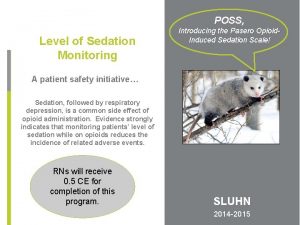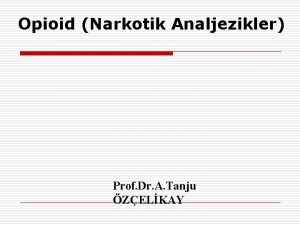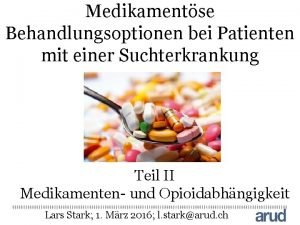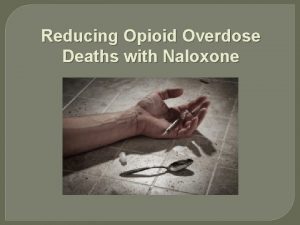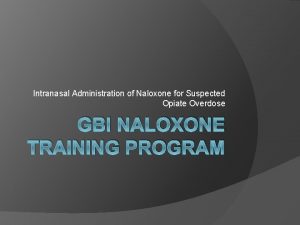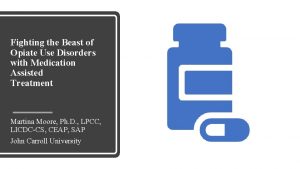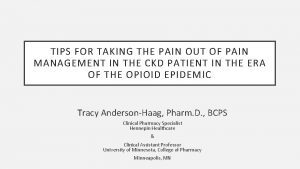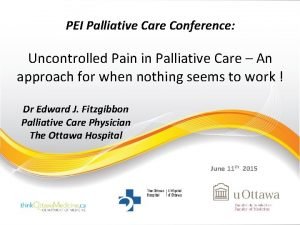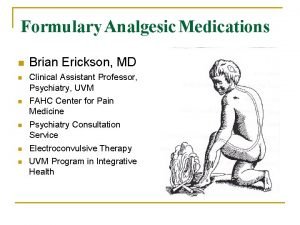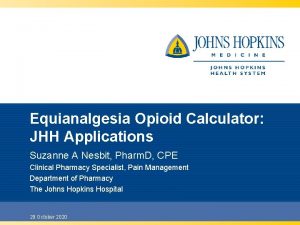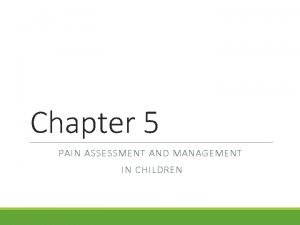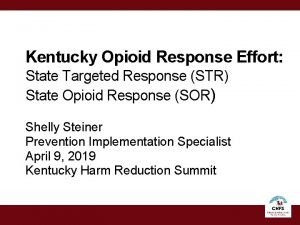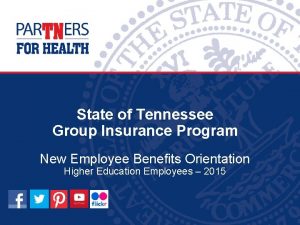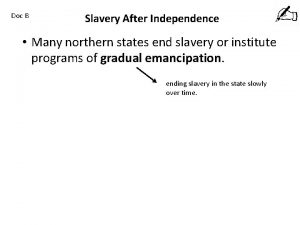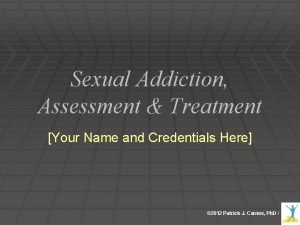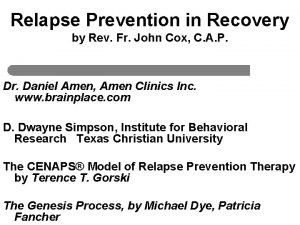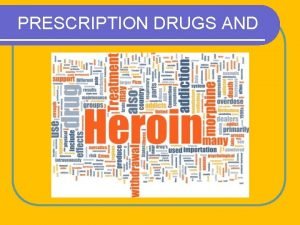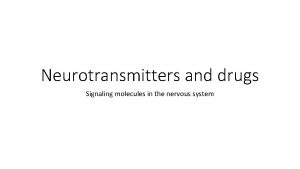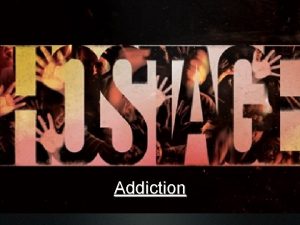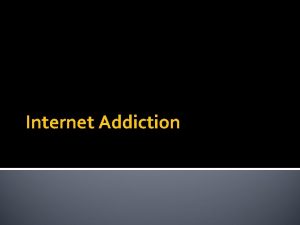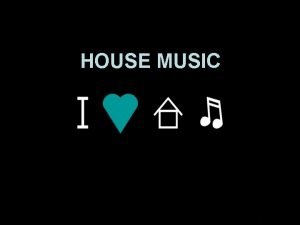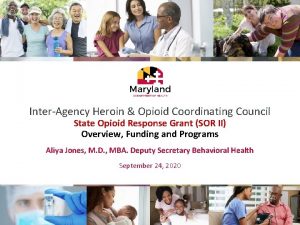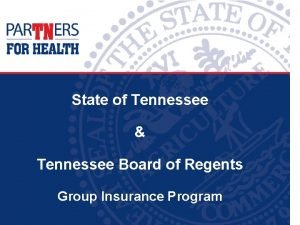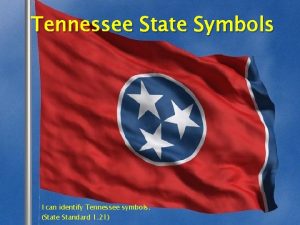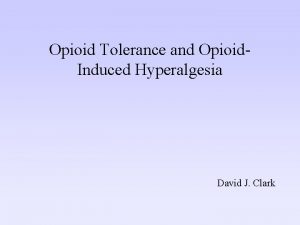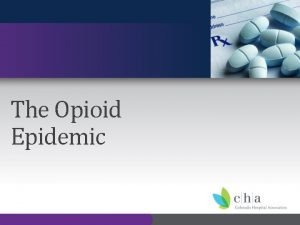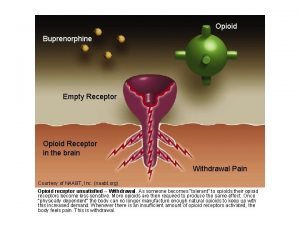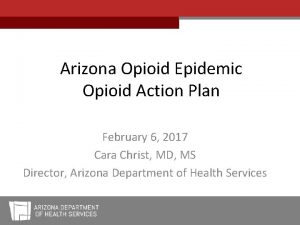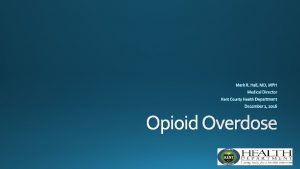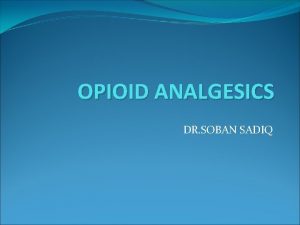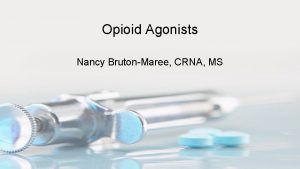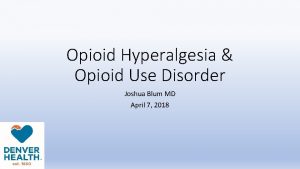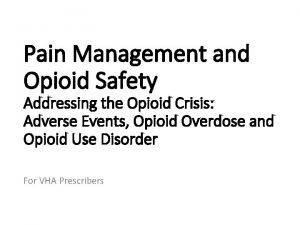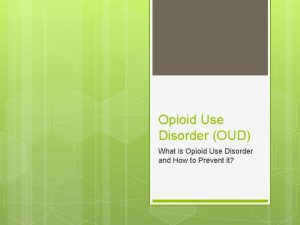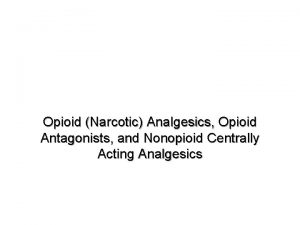Opioid Addiction in Tennessee State of Tennessee House





























- Slides: 29

Opioid Addiction in Tennessee State of Tennessee House of Representatives Task Force on Opioid Abuse February 23, 2017 Rodney Bragg, Assistant Commissioner for Substance Abuse Services Stephen Loyd, M. D. , Medical Director for Substance Abuse Services

Addiction is a Disease, Not a Moral Failure The Science of Addiction 2

Addiction is a Disease, Not a Moral Failure 3

Addiction is a Disease, Not a Moral Failure Hi-Jacking of the Limbic (Reward) System 4

Addiction is a Disease, Not a Moral Failure Brain Healing Takes Time 5

Addiction is a Disease, Not a Moral Failure Source: Surgeon General’s Special Report: Facing Addiction in America Chapter 2 6

How Did We Get Here? • Decade of chronic pain epidemic (1990 s); Joint Commission “Pain as the 5 th vital sign” • Marketing of opioids as having a low addictive potential when used for the treatment of chronic pain • Result: Opioids prescribed more freely by practitioners • Tennessee Impact: Increase in doctor shopping Increase in morphine milligram equivalents (MMEs) prescribed Increase in prescriptions dispensed Increase in number of people seeking treatment for opioid use disorder – Increase in improper prescribing (pill mills) – Increase in number of people in the criminal justice system for drug -related offenses – Increase in number of babies born drug dependent – Increase in overdose deaths – – 7

Tennessee’s Response to the Opioid Epidemic 8

How Many Tennesseans are Affected? In Tennessee, it is estimated that 69, 100 individuals are addicted to prescription opioids and require treatment for prescription opioid abuse. Another 151, 900 Tennesseans are using prescription opioids in ways that could be harmful, and they may benefit from early intervention strategies. Source: National Survey on Drug Use and Health 9

Tennessee’s Response Prescription for Success – Summer 2014 7 Goals 1. Decrease the number of Tennesseans who abuse controlled substances 2. Decrease the number of Tennesseans who overdose on controlled substances 3. Decrease the amount of controlled substances dispensed in Tennessee 4. Increase access to drug disposal outlets in Tennessee 5. Increase access to and quality of early intervention, treatment, and recovery services 6. Expand collaborations and coordination among state agencies 7. Expand collaborations and coordination with other states 10

Tennessee’s Response Successes: • • • Funded 10 additional anti-drug coalitions for a total of 43. Increased prevention efforts by reaching 6 million Tennesseans through the Take Only as Directed advertising campaign. Decreased prescription opioid seizures, crimes, and arrestees. Drug Seizures 10, 000 8, 595 Crimes 9, 018 8, 669 7, 640 8, 194 7, 624 6, 654 6, 000 5, 580 6, 130 6, 299 6, 988 6, 243 4, 000 2, 000 Arrestees 2, 797 3, 353 3, 819 4, 051 4, 696 3, 799 3, 146 4, 585 2, 734 0 2009 2010 2011 2012 2013 2014 2015 Source: Tennessee Department of Mental Health and Substance Abuse Services Tennessee Bureau of Investigation 11

Tennessee’s Response Successes: Decreased opioid prescriptions by 1. 1 billion morphine milligram equivalents (MMEs). Amount of morphine milligram equivalents (MMEs)1 dispensed to Tennessee patients (in millions) and reported to the Controlled Substance Monitoring Database: 2012 -2015 MMEs (in millions) 10, 000 8, 792 8, 562 8, 082 7, 536 7, 500 5, 000 2, 500 0 Source: Tennessee Department of Health 2012 2013 2014 2015 12

Tennessee’s Response Successes: Increased the number of permanent drug collection boxes from 36 boxes in 2012 to 221 boxes in 2017 – all 95 counties are covered. 106 36 221 Collection boxes June 30, 2016 Collection boxes December 2014 Collection boxes January 2012 Source: Tennessee Department of Mental Health and Substance Abuse Services and Tennessee Department of Environment and Conservation 13

Tennessee’s Response Successes: • • Increased funding for a total of 54 recovery drug courts Increased recovery drug court enrollees from 1, 405 in 2013 to 4, 884 in 2016 – an increase of 248% Certified 180 faith-based “Recovery Congregations/Organizations” Increased funding to expand the number of Oxford Houses – sober living environments – from 6 in 2013 to 50 in 2016 with a capacity of 298 beds 298 Oxford House Capacity (beds) 300 248 163 200 100 89 0 Dec 31 Jun 30 2013 2014 2015 2016 Source: Tennessee Department of Mental Health and Substance Abuse Services 14

Tennessee’s Response Successes: Conducted 2, 466 Lifeline recovery trainings, established 290 new recovery meetings, and referred 1, 002 people to treatment Recovery group meetings established by Lifeline: September 2013 -July 2016 290 Sep 2013 to Jun 2016 172 Sep 2013 to Jun 2015 61 Sep 2013 to Jun 2014 Source: Tennessee Department of Mental Health and Substance Abuse Services 15

Tennessee’s Response Successes: • Conducted over 39, 000 Screening, Brief, Intervention, and Referral to Treatment (SBIRT) from 2012 to 2016 in primary care settings • In FY 2016, served 12, 191 individuals in state-funded clinical treatment services Source: Tennessee Department of Mental Health and Substance Abuse Services Substance Abuse Prevention and Treatment Block Grant FY 2016 - 2017 Annual Report 16

Tennessee’s Response The Tennessee General Assembly: – Passed the Prescription Safety Acts of 2012 and 2016 requiring: • Provider education on proper prescribing • Query of the Controlled Substances Monitoring Database (CSMD) • Reporting to the CSMD – Repealed the Intractable Pain Act in 2015 – Passed the Addiction Treatment Act of 2015, which includes a Good Samaritan Law assuring people helping others are not charged with a crime. – Passed the Ensuring Patient Access to Pharmacy Drug Disposal Programs Act of 2015, allowing pharmacies to participate in drug collection programs. – Passed legislation establishing regulations for Pain Clinics and Office-Based Opioid Treatment Clinics 17

Tennessee’s Response Other General Assembly Actions: – Funding for Lifeline Program – Funding additional Recovery Drug Courts – Increased funding for naloxone programs 18

Additional Outcomes 19

Promising Trends Show a Decrease in Tennessee Adolescent Substance Abuse Substance use declined among Tennessee youth from 2004 -2006 to 2012 -2014 – – Illicit drug use dropped from 6% to 3% Alcohol use declined from 14% to 10% Misuse of pain relievers dropped from 9% to 5% Cigarette use declined from 13% to 7% The later in life a person waits to use substances, the less likely the person is to develop a substance use disorder. Source: Tennessee Department of Mental Health and Substance Abuse Services, Strategic Prevention Framework and Substance Abuse and Mental Health Services Administration American Society of Addiction Medicine 20

What Tennessee is Doing Works Includes Tennessee has mandatory prescriber education, opioid prescribing guidelines, pain clinic and officebased opioid treatment regulation, a controlled substance monitoring database, and access to naloxone. But, we need more funding to meet the need. Source: National Safety Council Report Card, 2016 21

Disturbing Trend – Increase in Heroin Use Heroin rates are highest in urban areas Source: Tennessee Bureau of Investigation (TBI) CJIS Support Center, 2014 -2015 22

Disturbing Trend – Fentanyl Can You Tell the Difference?

The Substance Abuse Treatment Gap Due to a Lack of Funding, Most People in Need of Substance Abuse Treatment Do Not Receive It Individuals with Select Medical Conditions Who Receive Treatment Percent 90 77. 2 72. 9 60 30 0 10. 9 Hypertension Diabetes Addiction (excluding Nicotine) Source: Centers for Disease Control and Prevention and National Survey on Drug Use and Health 24

Potential New Resources 25

Potential New Resources 21 st Century Cures Act • Tennessee is likely to receive $13. 8 million per year for 2 years for a total of $27. 6 million • If received, treatment services that will be funded include: – – – Continuum of Care Treatment Services Treatment for Pregnant Women Tele-treatment in Rural Tennessee Counties Medication Assisted Treatment Recovery Support Services This treatment funding will serve an additional 5, 038 – 10, 534 Tennesseans based on types of services provided. Other services funded will include: – Naloxone Training and Distribution – Regional Overdose Prevention Specialists – Media Campaign 26

Potential New Resources Governor Haslam’s Recommended FY 2018 Budget • $6 million, new recurring state dollars, to expand substance abuse treatment services • This expansion will serve an additional 1, 565 – 4, 380 Tennesseans yearly based on the type of services provided “In Tennessee, we know what works. We have providers standing by ready and able to do what works. Our gap is in funding. ” Marie Williams Commissioner Department of Mental Health and Substance Abuse Services 27

Questions and Comments 28

For More Information Rodney Bragg Assistant Commissioner 615 -532 -7783 Rodney. Bragg@tn. gov Stephen Loyd, MD Medical Director for Substance Abuse Services 615 -532 -1225 Stephen. Loyd@tn. gov 29
 Poss scale vs rass scale
Poss scale vs rass scale Opioid reseptörleri
Opioid reseptörleri Ecotussin
Ecotussin Opioid overdose
Opioid overdose Opioid overdose
Opioid overdose Opioid overdose
Opioid overdose Non-opioid
Non-opioid Mechanism of action of opioid analgesics
Mechanism of action of opioid analgesics Nips pain score
Nips pain score Opioid receptors location
Opioid receptors location Brian erickson md
Brian erickson md Suzanne nesbit
Suzanne nesbit Non-opioid
Non-opioid Kentucky opioid response effort
Kentucky opioid response effort Tennessee state seal
Tennessee state seal State of tennessee group insurance program
State of tennessee group insurance program Library tsu
Library tsu Tennessee state university
Tennessee state university Slavery states map
Slavery states map Tennessee group insurance
Tennessee group insurance Acceptance house
Acceptance house Snug shared living
Snug shared living Banished boarding house
Banished boarding house My house shall be called
My house shall be called They went house to house
They went house to house Gad4d
Gad4d Sast-r scoring
Sast-r scoring Faster scale genesis process
Faster scale genesis process Learn.genetics.utah/content/addiction/mouse
Learn.genetics.utah/content/addiction/mouse Http://learn.genetics.utah.edu/content/addiction/
Http://learn.genetics.utah.edu/content/addiction/
